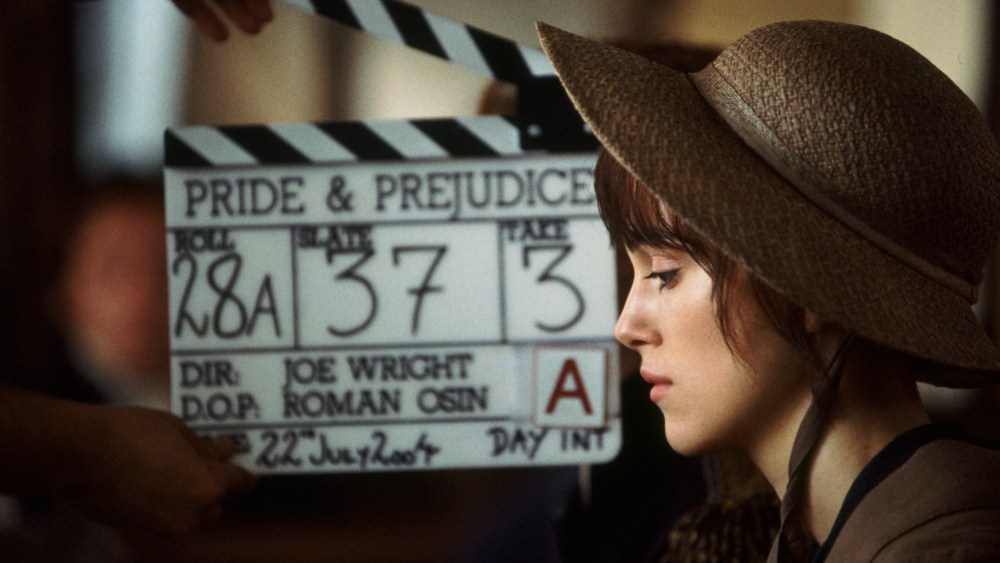The Enduring Charm of 2005’s ‘Pride and Prejudice’
Marking its 20th anniversary, the film adaptation of Jane Austen’s classic novel, “Pride and Prejudice,” directed by Joe Wright, continues to captivate audiences in theaters. The movie’s central romance unfolds during a vibrant ball scene, a favorite of Wright, who describes it as having a unique energy characterized by joy and spontaneity.
A Captivating Introduction
The ball scene serves as a pivotal moment in the film, introducing protagonist Elizabeth Bennet, portrayed by Keira Knightley, and Mr. Darcy, played by Matthew Macfadyen. Their first encounter is marked by Darcy’s haughty remark about Elizabeth’s appearance, setting the stage for their complex relationship. This lively atmosphere captures the essence of youthful romance that Wright aimed to evoke throughout the film.
Casting and Character Dynamics
Wright’s approach to casting embraced the idea that the Bennet sisters should reflect youthful exuberance. The casting of actors like Rosamund Pike (Jane), Talulah Riley (Mary), Carey Mulligan (Kitty), and Jena Malone (Lydia) facilitated a depiction of sisterly relationships filled with laughter and authenticity. Rather than making physical similarities a priority, Wright worked with the actors to develop a unified laugh, highlighting their familial bond.
Reflecting on the film’s production, Wright noted that his youthful ambition allowed him to tackle the adaptation with a sense of freedom rather than being overwhelmed by the legacy of Austen’s work, stating, “I was very young and reckless… to make the best film I could possibly make.”
Visual and Thematic Innovations
The film distinguishes itself by emphasizing the characters’ youth, aligning closely with Austen’s original timeline. Wright sought to ensure Elizabeth was depicted as the 18-year-old heroine she is in the book, allowing audiences to experience her journey of first love and self-discovery.
Production designer Sarah Greenwood contributed significantly, ensuring that the film captured the Georgian era’s essence rather than the Regency period typically associated with adaptations. The Bennet household is depicted as lively but flawed, contrasting with the wealthier characters represented by Darcy and Bingley. “It was just the way of reinterpreting how they could have lived,” Greenwood explained.
The Destructive Forces of Wealth and Class
The film’s settings play a critical role in illustrating the hierarchical divide between the Bennets and the affluent characters. The combination of a bustling household atmosphere with visual expressions of economic struggle provides depth to the narrative. Greenwood emphasized the intent behind portraying a household that felt “comfy and lived-in,” rife with realism rather than the sterility often seen in period dramas.
Cinematic Techniques
Wright employed innovative techniques to enhance the film’s emotional resonance. He aimed for scenes—like the powerful argument between Elizabeth and Darcy during the rain—to unfold with the rhythm of music, allowing tension and chemistry to build between the characters. Their interactions reflect the societal constraints of their time, contributing to the film’s intricate portrayal of love and miscommunication.
Innovative Locations and Collaborative Spirit
Filming took place across several historic estates, with Chatsworth House prominently featured as Pemberley, despite initial challenges in acquiring permission to shoot. Wright’s persistence paid off, as the film team successfully altered the property’s decor to suit the film’s aesthetic. This collaboration extended beyond iconic locations; dialogue and artistic choices were finely tuned through cooperative efforts among the cast and crew.
The Legacy of ‘Pride and Prejudice’
As audiences revisit “Pride and Prejudice,” its continued relevance is evident. The film’s fresh appeal lies in its ability to resonate with contemporary viewers while remaining true to Austen’s themes. Greenwood noted, “It still is incredible and fresh and lovely today as it was then.” This enduring quality indicates that the story of Elizabeth and Darcy will continue to charm new generations.
In summary, the 2005 adaptation of “Pride and Prejudice” remains a significant cinematic achievement, blending youthful zeal with a rich exploration of character and society. With its 20-year legacy, viewers are encouraged to appreciate the film’s artistry, emotional depth, and the timeless nature of Austen’s narrative.

